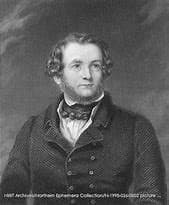History.

Thomas Simpson initially published Simpson's rule for approximating definite integrals in 1743. It was not Thomas Simpson who made the initial discovery, despite it being named after him. An early version of this rule was discovered in 1639 by Bonaventura Cavalieri. James Gregory published this modification and various other numerical techniques for approximating definite integrals in 1668.
Definition.
Simpson's Rule is a numerical method for approximating the integral of a function between two limits, a and b. It's based on knowing the area under a parabola, or a plane curve. It uses parabolas to approximate the area under the curve by creating subintervals, calculating the area and adding them together.

Below is the Simpson's Rule: Assume that is continuous over . Let be a positive even integer and . Let be divided into subintervals, each of length , with endpoints at .
Formula:
Real World Applications.
We typically apply the fundamental theorem of calculus to obtain the definite integral, which requires the employment of antiderivative integration techniques. Finding the antiderivative of an integral is challenging in different situations, however, such as scientific experiments where the function needs to be derived from observable data. Numerical methods are applied to approximate the integral in such cases.
Simpson's rule finds the values of the definite integral using quadratic or cubic curves, depending on the precision required. Cubic curves provide more precision.
a. Determining static and dynamic reaction forces on surfaces and volumes.
b. When developing a new maritime vessel, resolving buoyancy and stability issues.
c. Calculating average power across an infinite number of voltage and current cycles.
Scope and Limitations.
- Subintervals must be even. We divide the area into even number of segments. The reason for this is because we integrate two subsections at a time (remember that we are using parabolas to approximate the area)
- Inapplicable to Improper Integrals.
- Integral with Infinite Interval. The function approaches zero as x approaches infinity
- Integral with a Singularity. Has a singularity at 𝑥 = 0 . As 𝑥 approaches 0 from the right, the function approaches infinity.
Conclusion.
Simpson's Rule is a numerical integration method used to approximate the definite integral of a function. What makes it unique compared to other numerical integration techniques like the trapezoidal rule is its use of quadratic approximations. Instead of approximating the function with straight lines (as in the trapezoidal rule), Simpson's Rule uses quadratic polynomials to approximate the curve of the function between each pair of points.
This quadratic approximation allows Simpson's Rule to provide a more accurate estimation of the integral, especially for functions that are well-behaved and smooth.
Another unique aspect of Simpson's Rule is its simplicity in implementation. It involves dividing the interval of integration into subintervals and applying a formula that combines the function values at the endpoints and midpoint of each subinterval to compute the approximation. This simplicity makes it a popular choice for numerical integration in various fields, including mathematics, physics, engineering, and computer science.
Learning Outcomes.
We created this website in order to fully understand Simpson's Rule and to create a calculator that shows the process of the this numerical integration.
Other Sources.